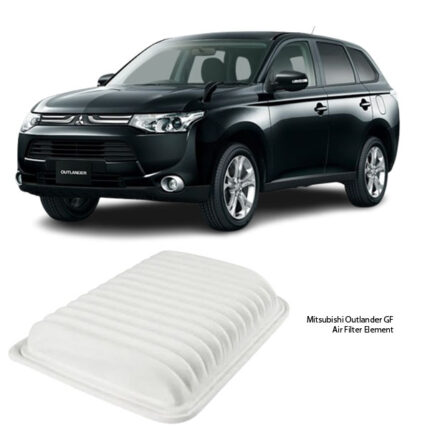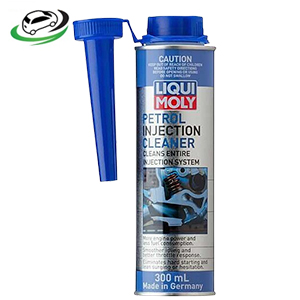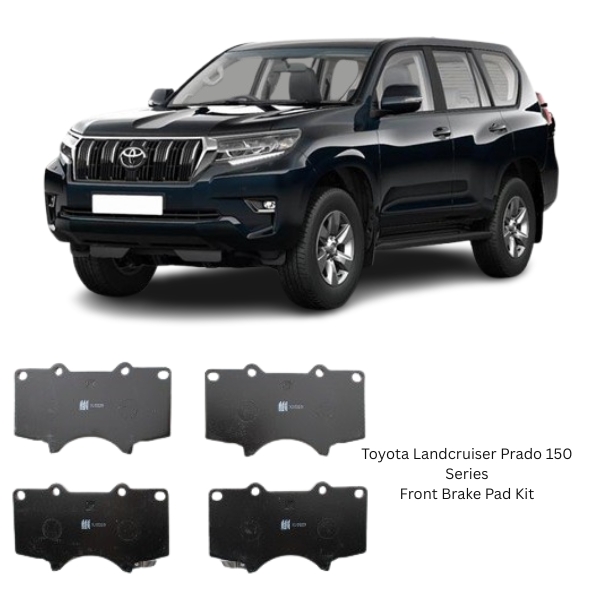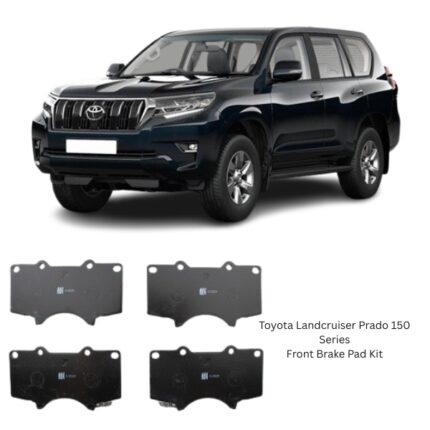Get Toyota Landcruiser Prado 150 Series Front Brake Pad Kit D2228M-1 in Kenya
The Front Brake Pad Kit is a fundamental component of a vehicle’s braking system, designed to deliver safe, efficient, and controlled stopping power under all driving conditions. Located within the front wheel assembly and working in conjunction with the brake discs (rotors), calipers, and hydraulic system, front brake pads are the first point of contact in the process of slowing down or stopping a vehicle.
Braking is one of the most critical operations in any automobile, and the effectiveness of this process heavily relies on the condition and quality of the front brake pads. As the primary stopping force, especially in front-heavy vehicles or during emergency braking, the front pads bear the brunt of braking energy, converting kinetic energy into heat through friction.
Purpose and Role
The primary function of front brake pads is to apply frictional force against the brake disc when the brake pedal is pressed. This friction slows down the rotation of the wheels, thereby decelerating and stopping the vehicle. The pads are fitted within the brake caliper, which clamps down on the rotating disc, initiating the frictional process.
Key roles include:
-
Vehicle Deceleration and Stopping: The brake pad presses against the spinning rotor to slow the vehicle down.
-
Heat Management: The material used is designed to withstand and dissipate high levels of heat generated during braking.
-
Consistent Friction Performance: Reliable brake pads ensure smooth and predictable braking under various road and load conditions.
-
Vibration and Noise Control: Properly engineered pads reduce brake squeal, vibrations, and judder.
Construction and Materials
A front brake pad is a precisely engineered piece of the braking system, designed to endure extreme pressure, high temperatures, and repeated use. Each pad consists of several key layers and components:
1. Friction Material
-
This is the outer surface that makes direct contact with the brake disc.
-
Composed of a mixture of resins, fibers, abrasives, and fillers that are formulated to balance durability, performance, and noise suppression.
-
Types of friction materials include:
-
Semi-metallic: Offers durability and heat resistance, suitable for high-performance or heavy-duty use.
-
Ceramic: Known for low dust, quiet operation, and consistent performance.
-
Organic/NAO: Made of natural materials with minimal metal content; gentle on rotors and typically quieter.
-
2. Backing Plate
-
A solid metal plate that provides structural support to the friction material.
-
Transfers force from the caliper piston to the friction surface evenly.
3. Shim and Insulation Layers
-
Placed between the backing plate and caliper piston.
-
Helps absorb vibration, reduce noise, and manage heat transfer.
-
Often made of rubber-coated metal or multi-layer composites.
4. Chamfers and Slots
-
Many modern pads include chamfered edges and/or slots to reduce noise and prevent uneven wear or cracking under high temperatures.
Contents of the Kit
A Front Brake Pad Kit typically includes:
-
Two Pairs of Brake Pads (four pads total – two for each front wheel)
-
Anti-rattle Clips or Pad Retainers: These hold the pads in place and minimize movement or noise.
-
Shim Plates: Used to absorb vibration and dampen noise.
-
Wear Indicators: Metal tabs or electronic sensors that notify the driver when the pad material has worn thin.
-
Grease or Lubricant Pack: Often included for application on caliper guide pins or contact points to reduce squeaking and improve pad retraction.
Performance Characteristics
The performance of front brake pads is determined by a combination of design and material. Key performance traits include:
-
Stopping Power: The friction coefficient directly impacts how quickly a vehicle can decelerate.
-
Temperature Tolerance: High-quality pads can withstand and perform under intense heat generated during heavy or prolonged braking.
-
Fade Resistance: A critical feature where braking performance does not significantly drop as the pad temperature rises.
-
Noise and Dust Control: Engineered features and materials minimize brake dust accumulation and reduce squealing or screeching.
-
Longevity: While wear is inevitable, quality pads offer consistent performance over longer distances with minimal rotor damage.
Installation and Fitment
Installation of a front brake pad kit typically requires mechanical knowledge and precision. The process involves:
-
Removing the Front Wheels: To access the brake caliper and pads.
-
Retracting Caliper Pistons: Using a piston tool or C-clamp to push pistons back into the caliper housing.
-
Removing Old Pads: Taking care to observe how old pads and hardware were installed.
-
Installing New Pads and Hardware: Including clips, shims, and lubricants where required.
-
Reassembling and Bedding In: Ensuring proper torque and then performing a bedding-in process (gradual braking cycles to match pad and rotor surfaces).
Note: Proper bedding improves pad life and braking efficiency.
Maintenance and Wear Signs
Since front brake pads wear faster than rear ones, regular inspection and timely replacement are crucial for safety and optimal performance. Warning signs of worn pads include:
-
Squealing or Grinding Noises: Often caused by worn friction material exposing metal underneath.
-
Increased Stopping Distance: Indicating loss of braking efficiency.
-
Pulsation or Vibration: May indicate uneven pad wear or rotor issues.
-
Visible Wear Indicator Contact: Many pads include a metal tab that squeals against the rotor when the pad is low.
Replacement Intervals
Although replacement intervals vary depending on driving habits, terrain, and load, front brake pads typically require replacement every 30,000 to 60,000 kilometers. Vehicles subjected to frequent city driving, hilly areas, or towing may experience faster wear.
Regular inspection during routine servicing is advised, especially if any of the above symptoms are noted. Delaying replacement can result in rotor damage, increased repair costs, and compromised safety.
Advantages of Timely Replacement
-
Improved Safety: Ensures optimal stopping power and shorter braking distances.
-
Preservation of Rotors: Prevents metal-to-metal contact and expensive rotor resurfacing or replacement.
-
Noise Reduction: Eliminates high-pitched squeals caused by worn-out pads.
-
Better Fuel Efficiency: A well-maintained brake system reduces drag and rolling resistance.
-
Smooth Driving Experience: Enhances driver confidence and comfort, especially under emergency braking situations.
Follow us on Facebook for more parts.




